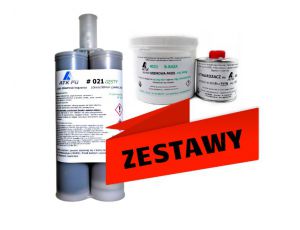Ceramics and stone adhesives
Stone, ceramics and porcelain, although hard and similar to each other, are not the same materials. Below we explain the differences and what glue to use in the most common situations. Below are examples in domestic applications, in the case of joining these materials in the production process, please contact us. How to glue the ceramics? When we think about ceramics, we usually mean elements in the house, such as a mug, plate, decorative figurines and other elements that have broken. The best and most effective adhesive for this type of repair is ATK FIX 01 with a white filler that will cover the defects caused by damage. The repair is very simple, because it is enough to apply the glue to one surface and press the whole thing for 5-10 seconds. Then fill the cavities with ATK FILL powder and pour adhesive to harden. If we have a hole right through on the outside - just stick the foil tape so that the glue does not run over during setting. If you apply too much, you can sand it with a file or sandpaper. However, when you have larger elements of sanitary ware - toilet, see the description below. What to glue porcelain with? Porcelain is often thought of as broken sanitary ware, such as a toilet or broken tiles. Such repairs can be performed as in the above point. They are often scratched, i.e. absorbable and uneven. Then it will be better to use Kemispox N epoxy glue in slightly yellow color or N11 and 351 as transparent when heated. We recommend these versions for such bonding. So what about ceramics and glazed porcelain? Here, the matter is a bit different than before, because we glue to very smooth surfaces and if in small elements to each other, i.e. ceramics+ ceramics, or for metal or wood, we can use: ATK FIX or ATK EP61, so for larger elements, a dozen or so centimeters, better choose ATK PU CLEAR - flexible colorless adhesive or ATK 812 in 3 colors. How to connect the metal letters and the vase on the monument-tombstone? The glue for such connections must not be too strong! for a very simple reason. If we gave ATK EP61 glue, the attempted theft would destroy granite or marble. A better solution is to choose PU16 or PU CLEAR with a lower bond strength. Bonding stone with other materials. A broken piece is the most common case. In this situation, there is nothing better than ATK EP61, especially since the color of granite is black. For gluing white marble, you can choose SA 10-15 wht with a perfectly white surface. This adhesive can also be used for ceramics and porcelain replacing the above versions. What about raw stoneware, e.g. in pots or building elements? If these are small areas - even ATKFIX 01 will be suitable, for larger ones it is better to use Kemispox N or EP 351.






